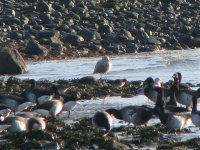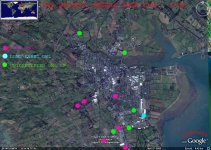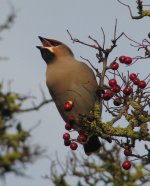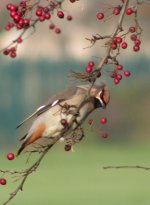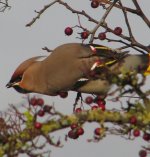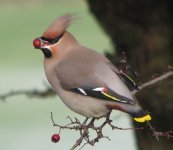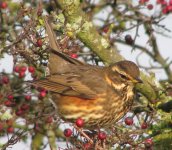Peter Phillips
Well-known member
I'm not fond of Turnips, and was dissappointed when the farmer renting the field beside my house decided to turn half off the field over to turnip propagation.
Last year he had a huge field of carrots and potatoes which saved me a fortune on vegatables. The rest of my family thought this was great and on visits to there county relatives, would don the wellies and hop across the fence to help themselves to this most natural of harvests.
Needless to say nobody in the family is too fond of the humble turnip and, this year visits from my relatives have been few and far between.
In the last week or two they have started harvesting the turnips, about a row a week. I have noticed a persistant flock of Goldfinch and Linnets hanging around and went out today to investigate. It turned out there were about 300 finches feeding in the field. All the Irish farmland sedeaters species were present(except Twite). The crop has a large number of weed species and the bare ground held some Meadow Pipits and Skylark. I walked along the hedge bordering the crop and kepy flushing Thrushes (about 50 birds). I assumed they were Redwing but on lifting my bins I saw they were all Song Thrush.
I have read that they like broad leaved crops like Turnip,( they like to forage in cover for snails and stuff) but never thought that so many would use such a small area. At the end of the field 300 Starlings
were feedind on the bare soil. The reasons I write this is that this brought me back to my misspent youth. When I used to frequent the fields around Baldoyle racecource and such sights were common. I cant remember the last time I saw such a variety of farmland birds in such a small area. Normally the fields are full of winter wheat with no more than a couple of dozen farmland bird present. The lack of winter vegtables in the arable landscape is obviously having a big impact on bird diversity in the countryside.
On the way home I saw a Merlin hunting over the field.This is only the second I have seen on the farm in 7 years.
I came home with a new found respect for Turnips. So if you care about your farmland birds put locally grown turnips on your shopping list!
Last year he had a huge field of carrots and potatoes which saved me a fortune on vegatables. The rest of my family thought this was great and on visits to there county relatives, would don the wellies and hop across the fence to help themselves to this most natural of harvests.
Needless to say nobody in the family is too fond of the humble turnip and, this year visits from my relatives have been few and far between.
In the last week or two they have started harvesting the turnips, about a row a week. I have noticed a persistant flock of Goldfinch and Linnets hanging around and went out today to investigate. It turned out there were about 300 finches feeding in the field. All the Irish farmland sedeaters species were present(except Twite). The crop has a large number of weed species and the bare ground held some Meadow Pipits and Skylark. I walked along the hedge bordering the crop and kepy flushing Thrushes (about 50 birds). I assumed they were Redwing but on lifting my bins I saw they were all Song Thrush.
I have read that they like broad leaved crops like Turnip,( they like to forage in cover for snails and stuff) but never thought that so many would use such a small area. At the end of the field 300 Starlings
were feedind on the bare soil. The reasons I write this is that this brought me back to my misspent youth. When I used to frequent the fields around Baldoyle racecource and such sights were common. I cant remember the last time I saw such a variety of farmland birds in such a small area. Normally the fields are full of winter wheat with no more than a couple of dozen farmland bird present. The lack of winter vegtables in the arable landscape is obviously having a big impact on bird diversity in the countryside.
On the way home I saw a Merlin hunting over the field.This is only the second I have seen on the farm in 7 years.
I came home with a new found respect for Turnips. So if you care about your farmland birds put locally grown turnips on your shopping list!




